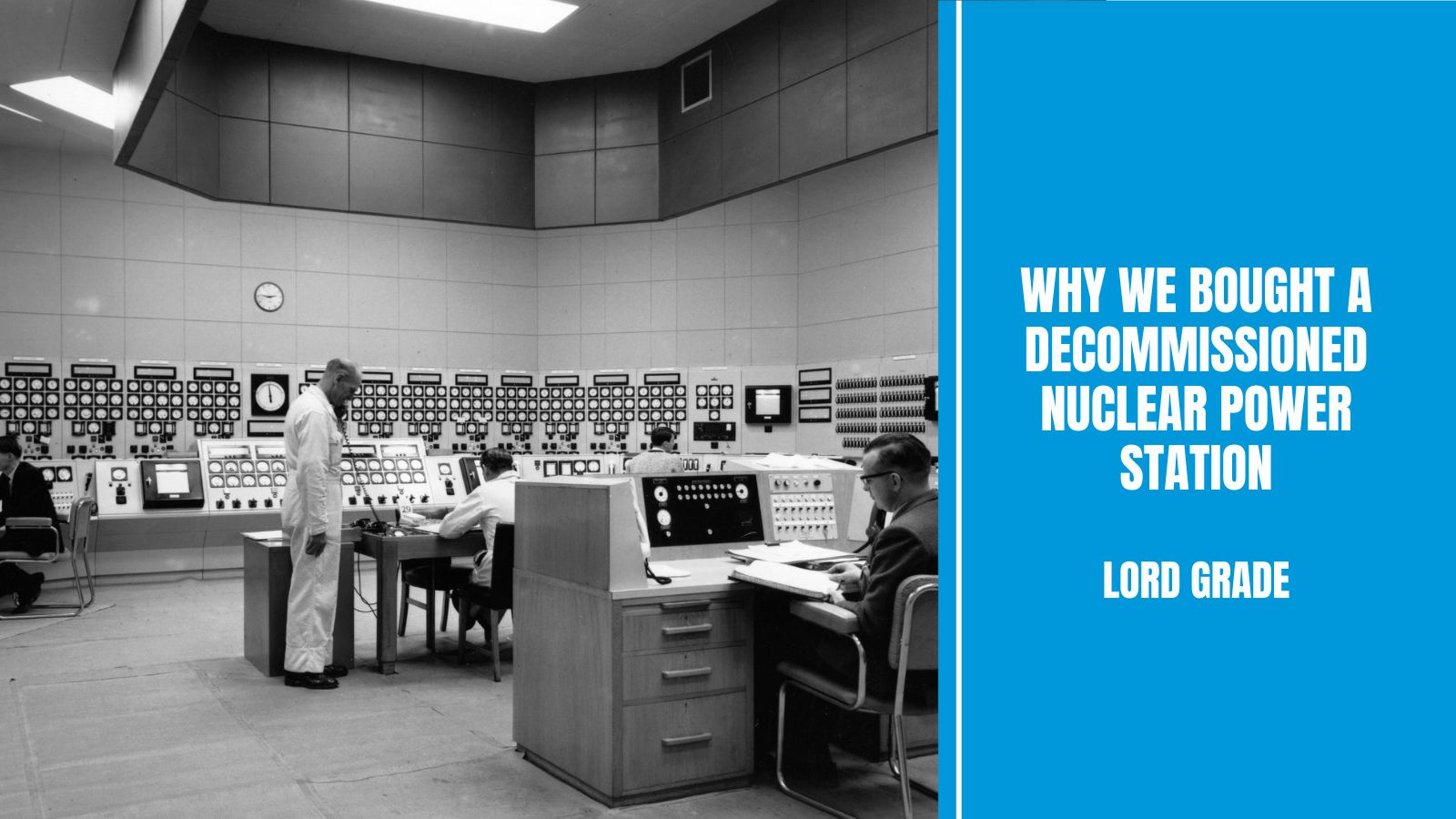Why we bought a decommissioned nuclear power station
Seventy years since a Brit first split the atom, it’s time to re-energise our nuclear industry and reclaim leadership in the technology of the future, says Lord Grade Down an unassuming country lane in Gloucestershire, out of the market town of Berkeley and toward the Severn Estuary, lies the site where Britain’s next nuclear power [...]


Seventy years since a Brit first split the atom, it’s time to re-energise our nuclear industry and reclaim leadership in the technology of the future, says Lord Grade
Down an unassuming country lane in Gloucestershire, out of the market town of Berkeley and toward the Severn Estuary, lies the site where Britain’s next nuclear power revolution is poised to take shape. The only hint of the monumental and historic site ahead is the presence of National Grid power lines weaving through hedgerows dotted with towering English oaks.
This is the site of one of the world’s first civil nuclear power stations, where Chiltern Vital Group (a company I chair) plans to create a world-class supercluster for atomic research and education. After completing the site acquisition this week, we are ready to kickstart a new era in British nuclear energy.
It has been more than 70 years since Sir John Cockcroft, one of Britain’s nuclear pioneers, won the Nobel Prize for splitting the atom. In 1947, as the director of the Atomic Energy Research Establishment, this WWI veteran opened the first nuclear reactor to operate in Western Europe. Yet, after spearheading this clean and carbon-neutral industry, the UK nearly abandoned the sector in the 1980s. For almost three decades, not a single new nuclear power plant was built in the UK until David Cameron enlisted France’s EDF and China’s General Nuclear Power Group to construct Hinkley Point C, down the coast from Berkeley, at the other end of the Bristol Channel – a project chronically over budget and already years late.
So, how can we re-energise British nuclear and reclaim our leadership in this critical field? How can we ensure affordable, clean energy and a secure domestic supply?
This is the vision behind Chiltern Vital Group’s acquisition of Berkeley. We will build on the work South Gloucestershire and Stroud College have done since decommissioning and expand research and education on the site, focusing on Small Modular Reactors (SMRs). SMRs, which are being pioneered in the UK by Rolls-Royce – who are currently in final talks to locate at Berkeley – represent the future of nuclear energy.
We must give this growing industry the fuel – skills and manpower – it needs to thrive, so it doesn’t become yet another great British innovation that fails to capitalise. Nuclear energy isn’t just an option for the UK; it is essential to our net-zero future. By providing a reliable, zero-carbon baseload that complements a majority-renewable grid, nuclear energy offers the only clean, realistic solution to the problem of wind and solar intermittency.
Large reactors like Hinkley Point C and Sizewell C will be crucial to the UK’s net-zero goals – Sizewell alone is projected to provide seven per cent of the UK’s power. However, this generation of nuclear power stations has been painfully slow to build and prohibitively expensive. The UK cannot afford to wait decades or rely solely on foreign firms to deliver more of these projects.
In contrast, South Korea’s Kepco has thrived because the nation has consistently invested in and sustained its nuclear industry, training engineers and building a fleet of new reactors at home and in the UAE. Thanks to their skill base, superior planning, and economies of scale, Kepco can construct large-scale power stations for a fifth of the cost per megawatt of generating capacity compared to Hinkley Point C. I suspect this is a key reason why Kepco signed a memorandum of understanding with the UK in 2023 to explore the potential of building here.
However, we can replicate this national success with SMRs if we invest in talent now. And who knows, maybe we’ll sell them to South Korea one day.
With their roots in the small nuclear reactors used in military submarines – a technology the UK has mastered over decades – SMRs have significant advantages. They are faster and cheaper to build and, in some instances, even movable. Once in full production, Rolls-Royce projects will cost around £1.8bn each, compared to the £22bn spent on Hinkley Point C.
An entire generation of SMRs could be built across the UK, with sites already earmarked in Snowdonia, Anglesey, and Oldbury-on-Severn in Gloucestershire, just five miles from Berkeley. As this sector grows, so too will the demand for skilled professionals, and at Berkeley we plan to meet this demand.
The UK must learn from past mistakes. To support the construction of Hinkley Point C, three training facilities were hastily established in Bridgwater and Cannington at a cost of £24m – a likely contributor to some of the project’s many delays.
Sir John Cockcroft, the son of a mill owner, began his nuclear career by studying electrical engineering at a technology college in Manchester after World War I. I dream that Berkeley will one day produce another Nobel laureate. But our most immediate and urgent task is to meet the country’s nuclear training needs and help the UK achieve its net-zero targets.
However, we cannot do this alone. The success of our essential nuclear power roll out depends on the support of government and parliament. In their election manifesto, the Labour Party recognised the potential of SMRs and made a firm commitment to nuclear energy. This augurs well.
Policies now need to be put in place to fast-track SMR development and incentivise investment to secure the funding needed. And down the line, nuclear will give us cheaper energy with a secure, home grown supply. With the Berkeley project, UK nuclear can become a booming export sector, driving jobs and growth and enriching the nation once more.
Lord Grade of Yarmouth is non-executive chairman of Chiltern Vital Group



